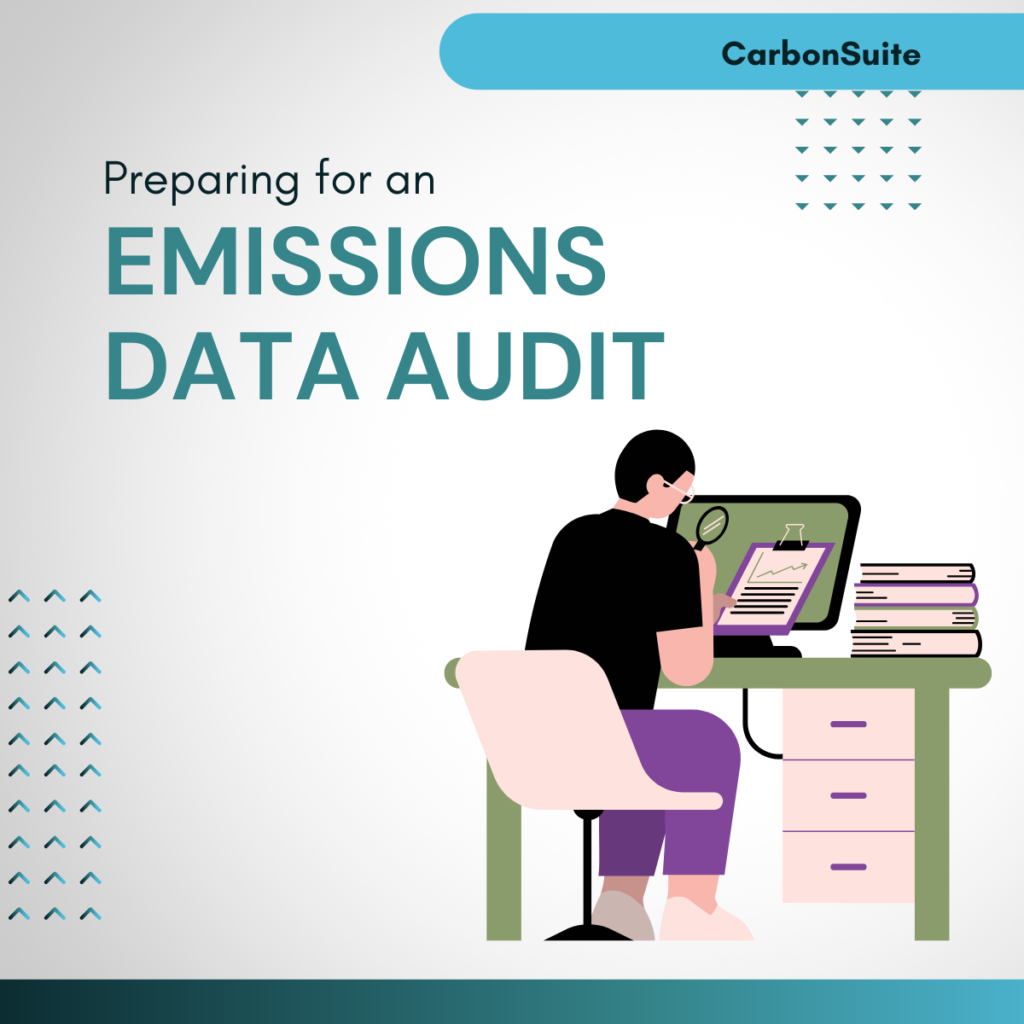Introduction
As more companies face regulatory requirements and stakeholder expectations around sustainability reporting, emissions data audit and assurance have become critical topics. At CarbonSuite, we hear from sustainability managers all the time: “How do I audit my emissions data?” This post will walk you through the basics of emissions assurance, explain the key principles involved, and clear up some common misunderstandings – especially when it comes to software claims about “certifying” emissions data.
What Is an Audit of Emissions Data?
An audit, whether of financial statements or emissions data, is an independent review conducted by a qualified third party. The purpose is to give confidence that the reported information is complete, accurate, and free from material misstatement.
If you’re new to assurance work, here are the key principles that guide the audit process:
Key Principles of Audit
-
Independence:
Auditors must be completely independent of the company they are auditing. Independence ensures that there is no bias in the review of the data. -
Materiality:
Auditors focus on issues that could significantly affect a user’s decision based on the emissions report. Not every small mistake matters, but big ones do. -
Evidence-Based:
Audits are built around collecting and evaluating sufficient appropriate evidence. Auditors don’t take your word for it; they verify based on documentation and data. -
Professional Skepticism:
Auditors are trained to question and critically assess information rather than accepting it at face value. -
Clear Reporting:
The outcome of an audit is a formal opinion that is communicated clearly, so stakeholders understand the reliability of the data.
In short: an audit isn’t about finding every tiny error, but it’s about providing reasonable assurance that the emissions data is trustworthy.
Why Carbon Accounting Software Can’t “Certify” Your Emissions Data
Some carbon accounting software platforms advertise that they can certify or verify your emissions data directly from their system — often even including a “verification stamp” you can download after you click submit.
Here’s the problem:
No software provider can independently verify the data they are calculating. In accounting, independence is a foundational principle. A company (or platform) that prepares your numbers cannot also audit them. That’s like grading your own homework! You don’t expect NetSuite, your accounting system, to audit your financial reporting. Carbon accounting is no different.
When a software vendor claims to “certify” emissions data they helped calculate, it’s clear that the system was not designed with real accounting or assurance standards in mind. At CarbonSuite, we believe strongly that trustworthy sustainability reporting must uphold the same high standards as financial reporting.
Our job is to build the transactional system. This helps you collect, organize, and manage your emissions data with transparency and traceability. So, when an independent auditor reviews it, the data holds up.
What’s the Difference Between Limited and Reasonable Assurance?
When it comes time for an audit, not all assurance engagements are the same. The two main types are:
Limited Assurance
-
Scope: Focuses on whether anything appears to be wrong, based on limited procedures like inquiries and basic analysis.
-
Level of confidence: Moderate.
-
Examples in Sustainability Reporting:
-
The EU’s Corporate Sustainability Reporting Directive (CSRD) initially requires limited assurance for emissions disclosures starting in 2025, with plans to transition toward reasonable assurance over time.
-
Under Australia’s Sustainability Reporting Standards (ASRS), limited assurance is mandated for Scope 1 and Scope 2 greenhouse gas emissions, as well as governance and strategy disclosures, in the initial reporting years beginning on or after 1 January 2025.
-
Reasonable Assurance
-
Scope: Involves detailed testing of controls, transactions, and data, akin to a financial audit.
-
Level of confidence: High.
-
Examples in Sustainability Reporting:
-
California’s SB 253 (Climate Corporate Data Accountability Act) requires reasonable assurance of Scope 1 and Scope 2 emissions data for large companies, beginning after 2027 (with limited assurance required earlier).
-
The Australia’s Sustainability Reporting Standards (ASRS) outlines a phased approach culminating in reasonable assurance for all climate-related financial disclosures from years beginning on or after 1 July 2030.
-
Summary
Think of limited assurance like a basic health check-up, and reasonable assurance like a full physical examination. Different mandates require different levels, but both require independent third-party review (not self-certification).
How CarbonSuite Supports Your Emissions Assurance Journey
At CarbonSuite, we are serious about making your data audit-ready, but we respect the critical role of independent assurance.
That’s why we partner with professional assurance providers who can review and validate your emissions data after it’s organized in CarbonSuite.
In short:
-
CarbonSuite makes sure your emissions data is accurate, complete, and traceable.
-
Our assurance partners provide the independent review needed to meet regulatory standards like CSRD, SB 253, and SB 261.
If you’re preparing for emissions audit or assurance requirements, reach out to us, and we’ll connect you with the right experts.
Ready to make your emissions reporting audit-ready?
Contact CarbonSuite today to get started.

